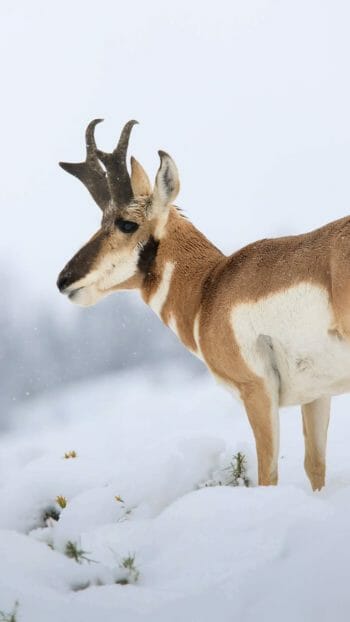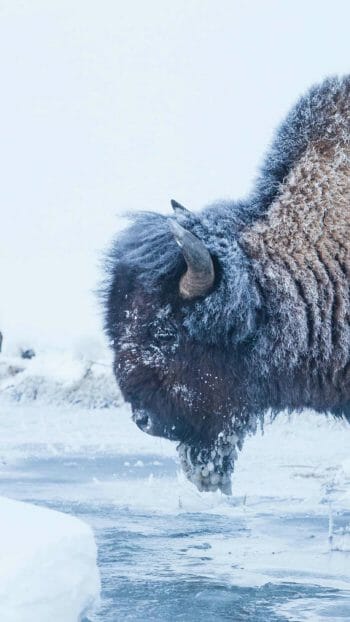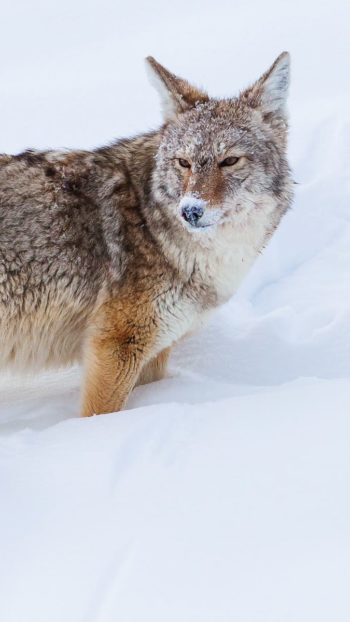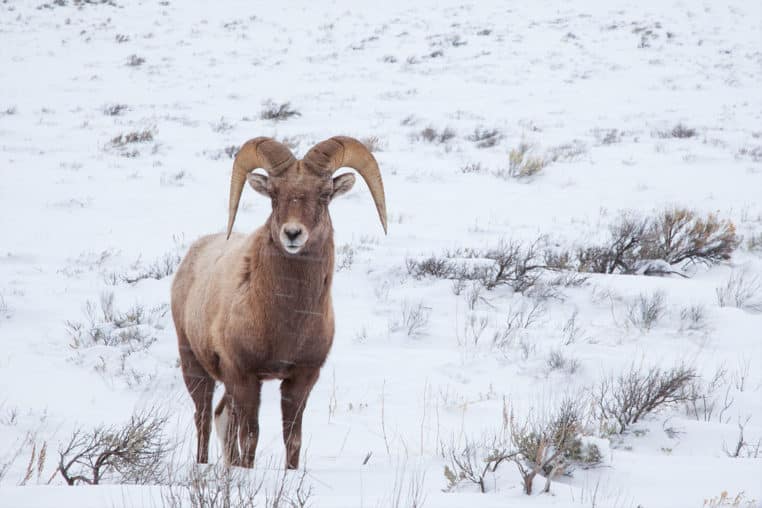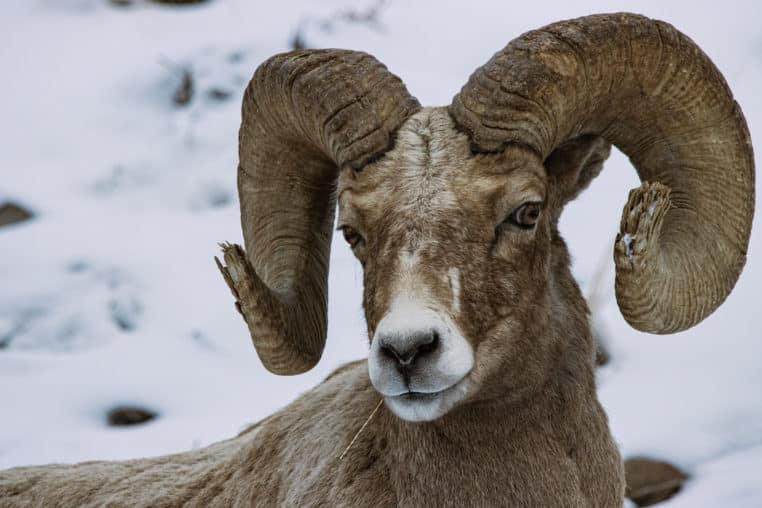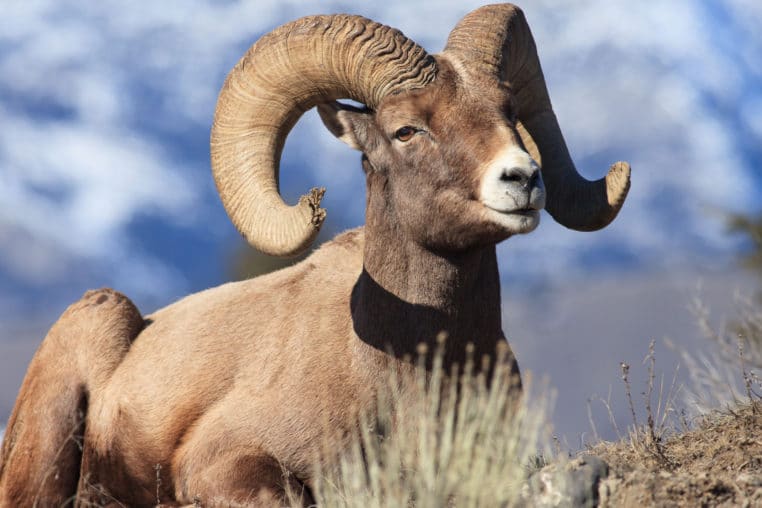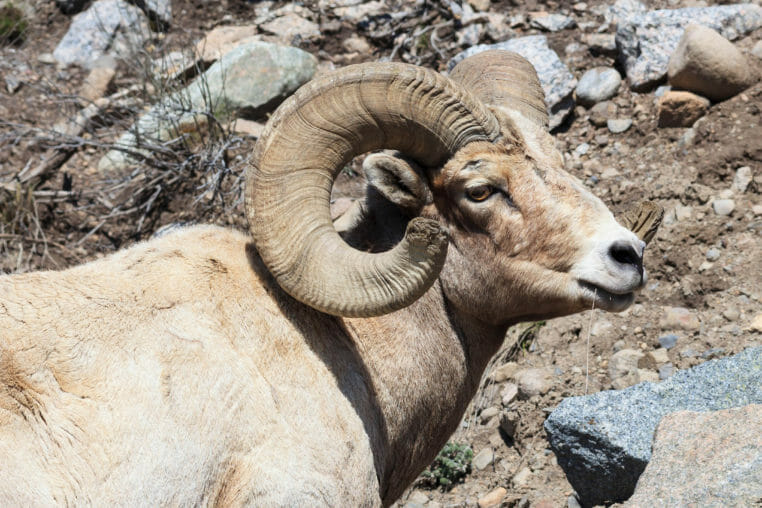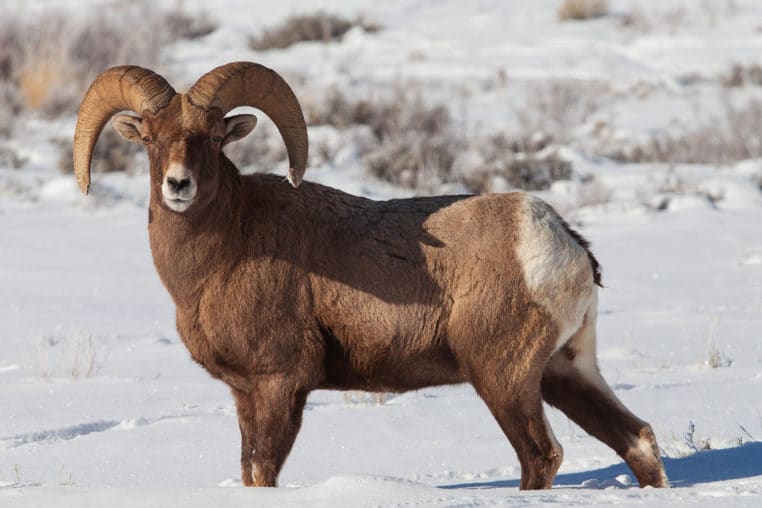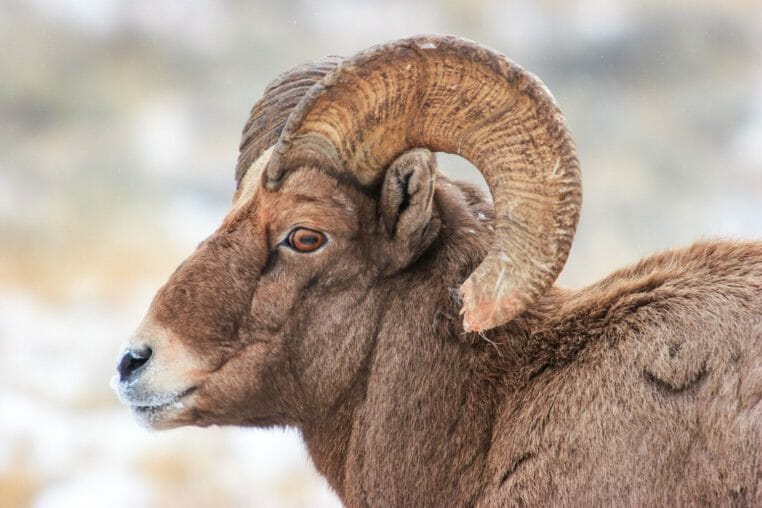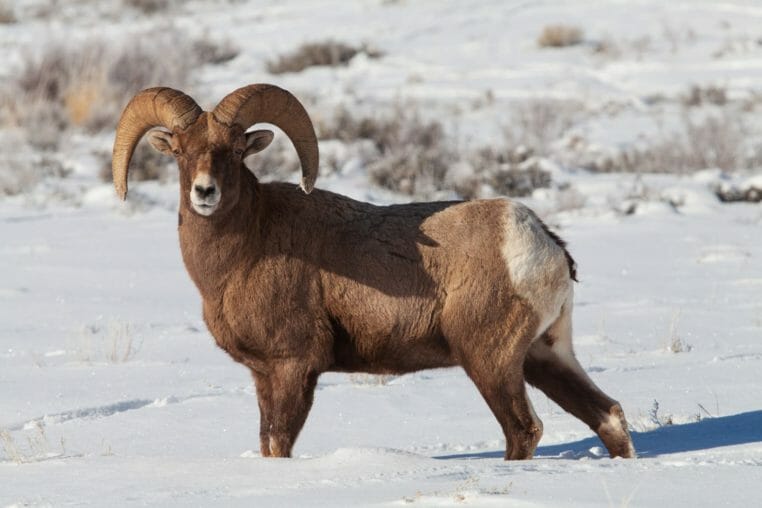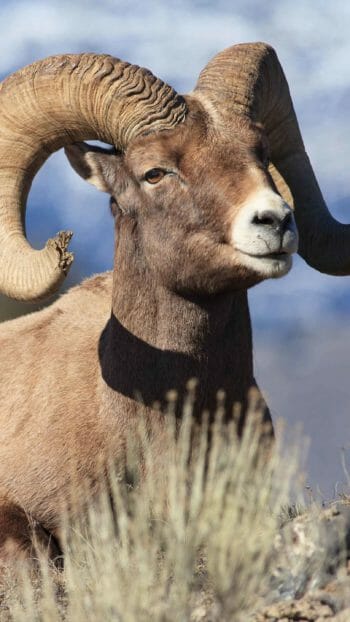
Ovis canadensis
Few animals capture the rugged spirit of the Rocky Mountains quite like the bighorn sheep. These impressive animals are symbols of strength, resilience, and survival in some of the most challenging terrain of the Greater Yellowstone Ecosystem. Known as the ultimate mountaineers, bighorn sheep thrive in steep, rocky environments where few predators can follow. Their presence on cliff faces and alpine ridges makes them one of the most rewarding wildlife sightings for visitors to Yellowstone and Grand Teton National Parks. Observing their agility on sheer slopes, or hearing the echo of rams clashing during the rut, is an unforgettable experience that highlights the wildness of this region.
Wildlife Viewing
- Yellowstone
Book Online
Watch For Wildlife On These Tours
About
Physical Traits
Bighorn sheep are built for mountain life. These muscular animals typically weigh between 150 and 300 pounds, with rams (males) noticeably larger than ewes (females). The most striking feature of the rams is their massive curled horns, which can weigh up to 30 pounds—a significant portion of their body weight. Unlike antlers, which are shed each year, these horns continue to grow throughout a ram’s life, developing deep ridges that reflect age and status. Their specialized hooves have concave undersides with rough surfaces, providing traction on rocky ledges, while their strong legs allow them to leap and climb with remarkable confidence. These adaptations make them perfectly suited for navigating the steep cliffs and rugged terrain of the Yellowstone region.
The Rut
The bighorn sheep rut occurs later than most other ungulates in the ecosystem, with the peak taking place in December. During this dramatic season, rams compete for dominance and breeding rights through a series of head-to-head battles. Charging at speeds of up to 20 miles per hour, the rams collide with a thunderous crack that can echo across valleys. These contests are not only displays of strength but also of stamina and resilience, as clashes may continue for hours. The size and curl of a ram’s horns are visual signals of maturity and dominance, helping determine access to ewes during the breeding season. Observing the rut is a thrilling reminder of the power and determination needed to survive and reproduce in such a demanding environment.
Seasonal Movement, Where to Find Them
Bighorn sheep follow a distinct pattern of seasonal movement tied to the availability of food and the severity of winter weather. In summer, they inhabit high-elevation alpine meadows and rocky ridges, where they graze on grasses and forbs. At these heights, sightings often require patience and a spotting scope. As winter sets in and snow deepens, the sheep migrate to lower elevations in search of food. One of the most reliable places to see large numbers of bighorn sheep in winter is the National Elk Refuge near Jackson, Wyoming, where they gather alongside elk and other wildlife. These seasonal movements showcase their adaptability to changing conditions and highlight the importance of protected winter ranges for their survival.
FAQs
Where can I see bighorn sheep in Yellowstone and Grand Teton?
Bighorn sheep are often spotted on steep cliffs and rocky ridges during summer months, though they can be difficult to see without a spotting scope. In winter, large groups descend to lower elevations, with the National Elk Refuge near Jackson being one of the best places for reliable sightings.
How big do bighorn sheep get?
Adult bighorn sheep typically weigh between 150 and 300 pounds, with rams larger than ewes. The rams’ massive curled horns can weigh up to 30 pounds, growing throughout their lives and serving as both tools and symbols of dominance.
When is the bighorn sheep rut?
The bighorn sheep rut peaks in December, later than most other ungulates in the Greater Yellowstone Ecosystem. During this season, rams compete for breeding rights by charging and colliding head-on at speeds up to 20 mph, producing echoes that can be heard across valleys.
What do bighorn sheep eat?
Bighorn sheep are grazers, feeding mainly on grasses, forbs, and shrubs in alpine meadows during summer. In winter, they move to lower elevations to browse on shrubs and other available vegetation, adapting their diet to the harsh conditions.
Why are bighorn sheep important to the ecosystem?
As grazers in high-elevation habitats, bighorn sheep help maintain healthy alpine ecosystems by influencing plant communities. They also serve as an important prey species for large predators like mountain lions. Their dramatic rutting behavior and rugged habitat make them an iconic symbol of the Yellowstone region’s wild character.
Further Reading
Winter Yellowstone Tours: Wildlife, Wonders & Snowy Landscapes
Aug 19, 2025
Yellowstone National Park in winter is like stepping into another world. Snow blankets the valleys, steam rises dramatically from geothermal features, and wildlife moves through the landscape in search of food and shelter…
Animals of Yellowstone: A Seasonal Wildlife Guide
May 21, 202
From mighty grizzlies to elusive wolves and thundering herds of bison, Yellowstone National Park is a living, breathing showcase of North America’s most iconic wildlife where every season offers a different kind of magic.
Whether you’re planning a summer getaway or a winter escape, this guide reveals what animals you may encounter on your adventures…

